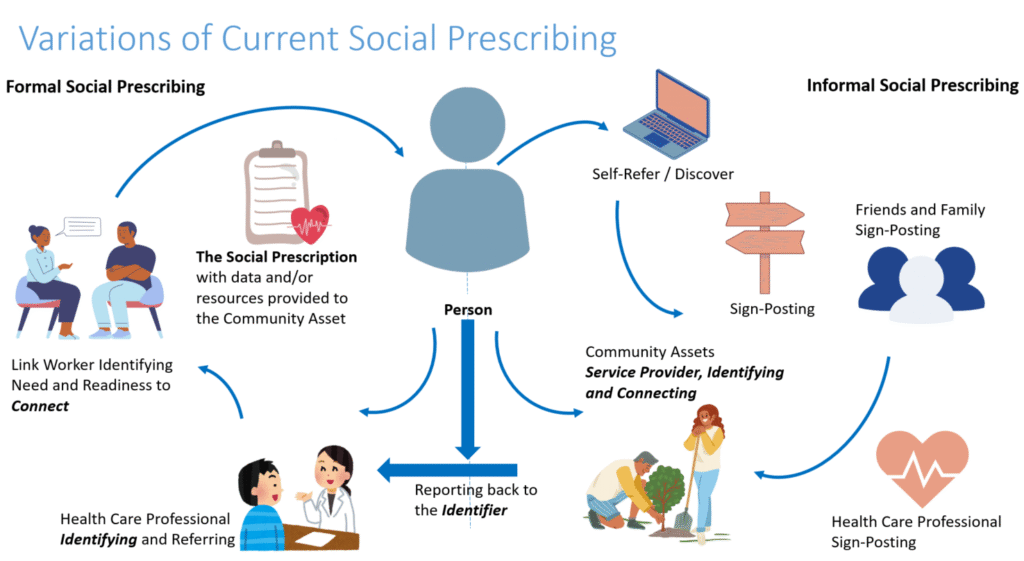Understanding Social Prescribing
Social prescribing is an interchangeable phrase and to fully understand what we mean when we refer to social prescribing we need to look at the international understanding of social prescribing.
Social prescribing is…‘a means for trusted individuals in clinical and community settings to identify that a person has non-medical, health-related social needs and to subsequently connect them to non-clinical supports and services within the community by co-producing a social prescription—a non-medical prescription, to improve health and well-being and to strengthen community connections.’ Caitlin Muhl et al. BMJ Open 2023;13:e070184
The Identifier – Identifies the person has non-medical, health-related social needs e.g. issues with housing, food, employment, income, social support.
The Connector – Connects the person to non-clinical support and services within the community by co-producing a non-medical prescription.
The Service User – The Service User is the person requiring the non-medical support.
The Service Provider – The Service Provider is the agency or group providing the non-medical support.

Social prescribing seeks to bring a ‘social prescription’ in-line and with the same value as a ‘traditional medical prescription’. Taking this approach makes this process more than a simple ‘sign-post’ which can often be referred to as social prescribing. At one end of the spectrum social prescribing can be a simple informal ‘sign-post’ whether by a friend, family member, a member of the community or even a health care professional. The other end of the spectrum of social prescribing is a more formal approach where an actual referral from a healthcare professional/link worker passing relevant and appropriate information about the patient with full consent of the Patient to the Service Provider (community asset) delivering the non-medical support. A formal approach naturally introduces a structured ‘social prescribing referral pathway’ with the need to implement Information Governance Policies and Procedures, which will be addressed in this toolkit.
